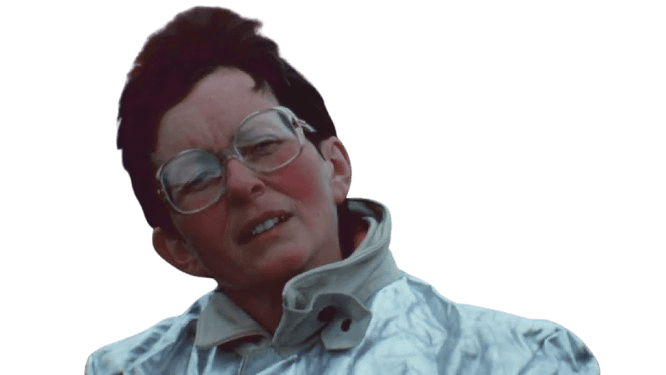Life and achievements
Early life
Katia Krafft was born on April 17, 1942, in Guebwiller, France, as Catherine Joséphine Conrad, but she developed a great interest in the natural world, mainly volcanoes. This passion led her to the University of Strasbourg, where she studied physics and chemistry. At university, she comes across another volcano lover, Maurice Krafft, whom she married and worked with till her death. The couple became interested in volcanoes and started to explore volcanic regions together. Katia was especially interested in photography of volcanic activity, and due to her courage, she took photographs at the edge of volcanic activity.
Katia’s early work focused on the behavior of volcanic eruptions, particularly the gases and pyroclastic flows. She carefully recorded the impacts of these eruptions on different environments, frequently taking samples and gases around the active volcano at her own peril. Her experience in documenting these occurrences as they occurred resulted in many books and scientific papers that helped advance the study of volcanology.
Being one of the first women in the field of volcanology, Katia paved the way for future women scientists.
Legacy
Courage, passion, and scientific contribution are the defining words that sum up Katia Krafft. With her husband Maurice, she did more to develop the science of volcanos than anyone else. Their work directly impacted a better appreciation of volcanic risks and enhanced preparedness for disasters in areas vulnerable to volcanic activity. The Kraffts were able to deter governments and local inhabitants from the danger of volcanic eruptions, and due to this, they helped to save many lives by advocating early evacuations in anticipation of eruptions.
Katia also contributed to science in general and entered the public’s consciousness. Through her photographs and films, she made millions of people aware of the picturesque and, at the same time, dangerous phenomena of volcanic eruptions, thus making the work of volcanologists understandable to the general public. In their work, Katia and Maurice underlined the need to balance desire, which dominated natural science, with the imperative of safety, which governed societal activity.
For this reason, Katia’s contributions ensured that the focus was on studying the volcanoes and how to live with them. Therefore, many generations will benefit from her work.
Her untimely death at Mount Unzen with Maurice and forty-one others was a dramatic end to a daring career, which, however, also brought out the risks that are involved in the profession of volcanologists. One of their impacts is evidenced by the Krafft Medal the International Association of Volcanology gives.
Katia Krafft is still celebrated to date as one of the most passionate, determined, and dedicated earth scientists who ventured into studying some of the most threatening natural disasters on planet Earth.
Join Confinity and create a lasting digital legacy, just like history’s greatest minds. Signup Now
Learn how this historical figure’s legacy continues to shape our world today →
Milestone moments
Mar 13, 1970
The Discovery of Volcanoes and Marriage to Maurice Krafft
Katia Krafft was born in 1942; in 1970, she met and married Maurice Krafft, a volcanologist, and they began working together as volcanologists.
The couple decided to have a professional activity as photographers of volcanic eruptions and to risk getting close to eruptions and capturing their energy.
This was the foundation of their careers, paving the way to their major achievements in volcanology and disaster risk-reducing communication.
Jul 23, 1973
Study of Icelandic Eruption
On January 23, 1973, Katia Krafft was summoned to watch the eruption of an extinct volcano in south Iceland.
Due to her courage, she obtained unique video material and data, which made her even more famous among volcanologists.
This event was one of the first significant eruptions that Katia filmed, though she would go on to better-known expeditions later in the decade.
Apr 15, 1985
This paper focuses on the documentation of the Nevado del Ruiz eruption.
In 1985, Katia and Maurice filmed the fatal eruption of Nevado del Ruiz, which caused a huge lahar and the destruction of Armero town.
The footage shot by the Kraffts proved instrumental in drawing attention to the important issue of timely evacuations during volcanic events and enhancing the general preparedness for volcanic hazards worldwide.
This time, they proved that their work can help save lives by raising awareness of the threats posed by volcanic activity.
Jan 15, 1987
The PBS Documentary The Volcano Watchers
The couple was filmed in 1987 while they were in the PBS series Nature in an episode called The Volcano Watchers.
This documentary introduced their work to a large audience and demonstrated their passion and recklessness in studying volcanoes and their determination to spread awareness of volcanic dangers.
The documentary’s success further made them celebrities in the scientific public eye.
